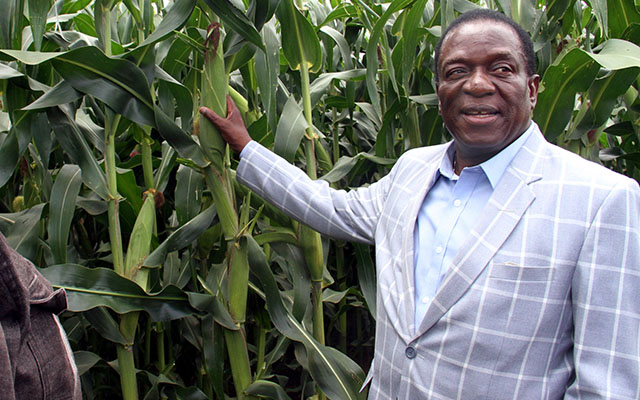Felex Share Senior Reporter—
Government used only $190 million under the Command Agriculture Programme, contrary to claims by Higher and Tertiary Education, Science and Technology Development Minister Professor Jonathan Moyo that $500 million went towards the scheme. Statistics from the Office of the President and Cabinet show that from the $190 million, $30 million went to the Presidential Inputs Support Scheme. The revelation comes as Agriculture, Mechanisation and Irrigation Development Minister Dr Joseph Made yesterday said the two programmes “have done well”.
Also read…..
- EDITORIAL COMMENT: Command Agric, STEM, sides of same coin
- 19 600 farmers receive Command Agric inputs
- Editorial Comment: Food security; everyone’s responsibility
- Allocations along Zim-Asset lines hailed
- Govt to sign $25m agric pact
As a result, the minister said, Government had stopped placing orders for maize imports as a good harvest was on the cards. Prof Moyo has been using social media to lampoon the Command Agriculture Programme, a brainchild of President Mugabe.
The project seeks to cut on maize imports and boost food security. Prof Moyo has been using his Twitter handle @ProfJNMoyo, to attack the programme being coordinated by the Office of the President and Cabinet.

VP Mnangagwa
President Mugabe appointed Vice President Emmerson Mnangagwa chairperson of the Cabinet committee on food security and nutrition, to oversee the implementation of the scheme. In one of his tweets, Prof Moyo insinuated that part of the money used under Command Agriculture was missing.
He wrote: “Better listen to agro-economists on how $500 (million) was commandeered to plant maize on just 153,102.60ha when the $500 (million) was meant for 400 000ha!” Dr Made said the two programmes were a success.
“All combined, these programmes have done well,” he said.

“This season, there is food at household level, and we expect small-holder farmers to sell any surplus. As Government, already we have stopped placing new orders for maize imports. What is coming in is just maize from those contracts we had committed to.”
He said the only limiting factor to the two programmes was top dressing fertiliser but the Presidential Inputs Scheme was better with the support it got from China.
“The special maize programme (Command Agriculture) has contributed to building up the capacity of extension staff, all departments,” Dr Made said.
“I want to see more resources put towards strengthening the extension so that we improve the mobility of the staff.”
On expected yields, Dr Made said actual projections would come after the second crop and livestock assessment.
“We are now working on the second round and, it is then that we will project what is likely to come but surely, when you take the maize, sorghum, millet and finger millet, we are anticipating that maize alone which is currently standing at 1,8 million (tonnes) will be slightly above that in terms of the yield.
“When you add small yields, our projection will be at 2,5 million (tonnes). Of that figure, everything produced under special maize programme will be delivered to GMB.”
Dr Made said much caution was needed on harvesting and storage of the produce “to avoid spoiling everything at the last minute.”
Statistics availed to The Herald showed that $160 million was used to plant 166 000 hectares of maize, while $30 million went to the Presidential Input Scheme after Government had pleaded with the funders for support. About 191 000 hectares of land were tilled with 166 000 being planted.
Funders of the Command Agriculture programme poured in $190 million targeting to plant 220 00 hectares of maize.
On the $160 million used for Command Agriculture, $85 million went towards irrigated land and $75 million was used on non-irrigated land.
A source from the Office of the President and Cabinet yesterday said the expected bumper harvest would stimulate economic growth.
“Anyone talking about $500 million is a candidate for Ingutsheni,” said the source.
“We cannot continue to argue with someone possessed with opposition demons as has been alluded by others before.”
Added the source: “The reason why the programmes are a success is because last year, Government made foreign payments of more than $250 million to import about 700 000 tonnes of maize, but the only foreign payments made on Command Agriculture was the $90 million used to bring in fertilizers and chemicals.
“The rest of the money circulated locally and industry activity was boosted with companies like Seed-co selling more than 22 000 tonnes of seed maize and being paid here. Secondly, the interest rates that the Command Agriculture farmers are paying are pegged at four percent against the 22 percent offered by banks.
“Most of the farmers were reeling in debt and losing property. Expected average yields per hectare would be about $1,400 based on the support price of $390 Government has already announced. Many farmers will be able to settle their debts.”
Private grain millers also imported about 400 000 tonnes of maize from Mexico, Ukraine and Zambia to complement Government efforts in 2016.

